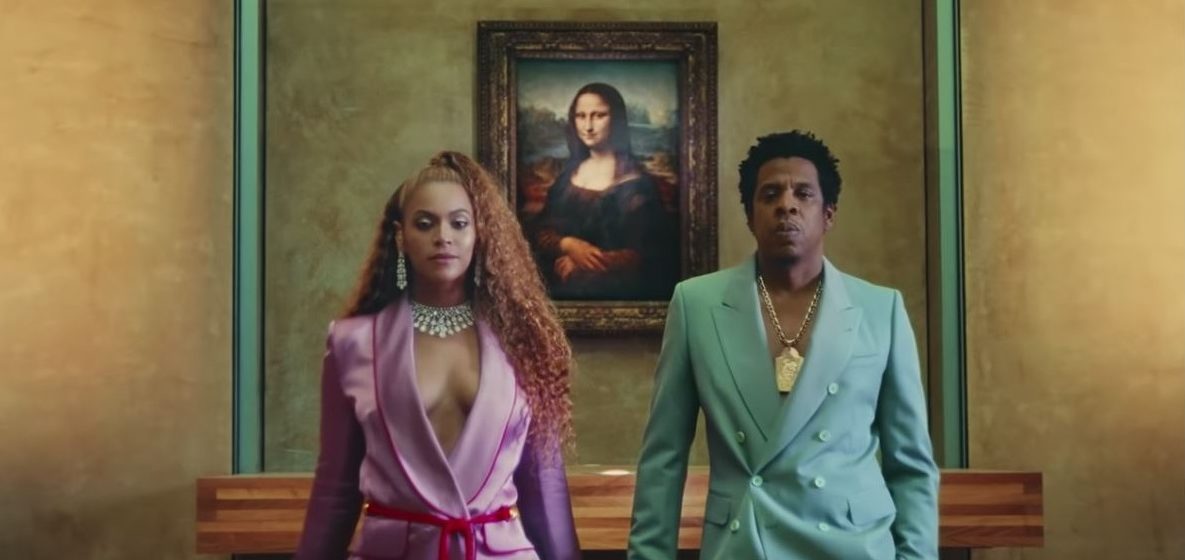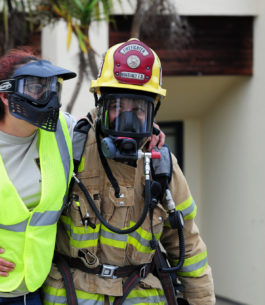In a moment of great scrutiny on the arts -whether they should be socially engaged or aesthetically courageous, or whether past canons based on exclusion are worth teaching at all or even more generally whether the arts provide “hard skills” to justify teaching them in school and universities- in this moment Beyoncé has done more than any educator to open up new spaces. The question is whether educators are up to follow her lead.
Her message is quite discomforting, the means to deliver it a piece of great art in its own right: her video, “Apeshit,” shot in the Louvre this year.
Although the video is about many things -her fame, her wealth, her art- its most consequential takeaway is how the greatest works of western art are hers, the Mona Lisa first among them, not because she is their legal owner, but because she claims them culturally, artistically, and aesthetically. The video appears in Wesley Morris’s New York Time Magazine essay this month on the morals of art. Here is how it looks to an art historian, and why it deeply matters now.
Stunning sequences, shot by Ricky Saiz, alternate aerial views of grand galleries and halls with traditional images of suffering, motherhood, sacrifice, power, beauty. Beyoncé, Jay-Z and dancers move in forms choreographed by Belgian choreographer Sidi Larbi Cherkaoui, which are as rigorous and imaginative as the works from the Renaissance and from Revolutionary France themselves.
The video contains the elements of great art: perfection of execution, balance of body motions and settings, rigor in framing the right moment.
It has poignancy in articulating desires and contradictions that are crucial to the moment, just as the works shown in the video defined the moment in which they were created. It’s a classic.
Furthermore, the video subverts values and canons and puts Black people in spaces from which they had been excluded. Marie Benoist’s Portrait of a Negress is included. So is the Black man at the top of Gericault’s Raft of the Medusa, a famous figure in art history whose race goes generally unacknowledged, but who becomes here a symbol for boys shot by police (an image in the digital booklet that accompanies the album leaves no doubt that that’s how the Carters see him). An ancient god kneeling to fasten his sandal relates to kneeling NFL football players, lances of Revolutionary France become raised arm of black youth in formation.
Beyoncé knows exactly where she stands in relation to these great works: right at the same level. She is as beautiful as the Venus of Milo, as powerful as an empress, as loving a mother as the Madonna. With Jay-Z, she personifies lavishness, victory, fame, even immortality. Together they stand in front of the most opulent wedding feast that has ever been painted, Veronese’s Wedding Feast at Cana, the most triumphant statues of all times, the Winged Victory of Samotracia, and the Great Sphinx of Tanis, the guardian of Egyptian pharaohs.
They are the new royals, sitting grandly and calmly in the galleries of the Sun King.
The lyric “I can’t believe we made” references their art, their place in the world, their marriage, and their deep engagement with the art of the past.
No doubt, the video is about their sense of self as the new, global royals of the modern world who replaced the national kings and queens of the old one. It’s also about a radical revision of the western canon to bring in Black people who were excluded from it, a manifesto for an art that is inclusive, socially impactful and popular as well as aesthetically perfect, as perfect as a masterpiece of the past. It creates discomfort, just like all great art does.
But it’s also about the pleasure of admiring works, traditions and canons created on exclusion and the ambivalence and tension between rewriting those old canons and at the same time admiring their products. What Beyoncé and Jay-Z demonstrate in the Louvre is not just the power to rewrite history and place themselves firmly within it, but also the transcending power of great art and the purposeful discomfort that Beyoncé and Jay-Z seek to cause with their own art.
The Mona Lisa, arguably the most famous painting of western art, is the key to these ideas. At the beginning the couple stand shoulders to the work, their bright pink and green tuxedo-inspired outfits in sharp contrast to Leonardo’s subdue colors and blurred edges. Leonardo’s painting appears again as a faded background to the Carters singing, to dancers, to a woman combing a man’s afro. The last is perhaps the most discomforting act: it places the famous portrait within a daily combing routine (by comparison the mustaches Marcel Duchamp put on the portrait about a century ago pale miserably as he acted on the painting’s gender and fame but didn’t redefine its place). In the last shot, Beyoncé and Jay-Z turn toward the Mona Lisa. All they do is to look at it. No music; only faint bells, the sound of a distant past. The masterpiece is theirs. To look at. To wrestle with. To claim as part of their own history and art. It’s a radical message. And one that puts lots of pressure on us as educators, on art history professors like myself, on critics, on curators.
There has been hardly a more cogent and important reminder of how much we need the arts today to make a difference, how much the arts are an effective guide toward an integration of cultures and traditions, of old and new, of black and white, of high and popular culture, of glamour and suppression. The Carters have reached 60 million people. How many can we as educators, critics, curators and art history professors reach?
Francesca Fiorani is the Associate Dean for the Arts and Humanities, Professor of Art History at the University of Virginia. This year she is Public Voices Fellow at UVA.
Worth your time
- Non Gamstop Casinos UK
- Best Non Gamstop Casinos 2025
- Non Gamstop Casinos UK
- Non Gamstop Casinos UK
- Casinos Not On Gamstop
- Casinos Not On Gamstop
- Casino Not On Gamstop
- Casino Italiani Non Aams
- Online Casino Canada
- Non Gamstop Casinos Uk
- Best Non Gamstop Casinos
- Meilleur Casino En Ligne France
- Casino Sites Not On Gamstop
- Non Gamstop Casino Sites UK
- Casino Online Non Aams
- Casino Sites Not On Gamstop
- Non Gamstop Casinos
- Meilleur Casino En Ligne France
- Meilleur Casino En Ligne Francais
- Casino Sites Not On Gamstop
- Non Gamstop Casinos UK
- Casinos Not On Gamstop
- Migliori Siti Casino Non Aams
- Meilleur Casino En Ligne
- Casino Non Aams















